In Te Whanganui-a-Tara, Wellington, Enviroschools Community Facilitators Chloe and Chandra drew on the whakapapa and kaupapa of the annual Ōtari student event, to create opportunities for more tauira and kaiako to connect with their local ngahere and awa spaces. This led to 7 different whaitua (catchment) connection events for local kura and ECE across the rohe in Term 2, 2025.
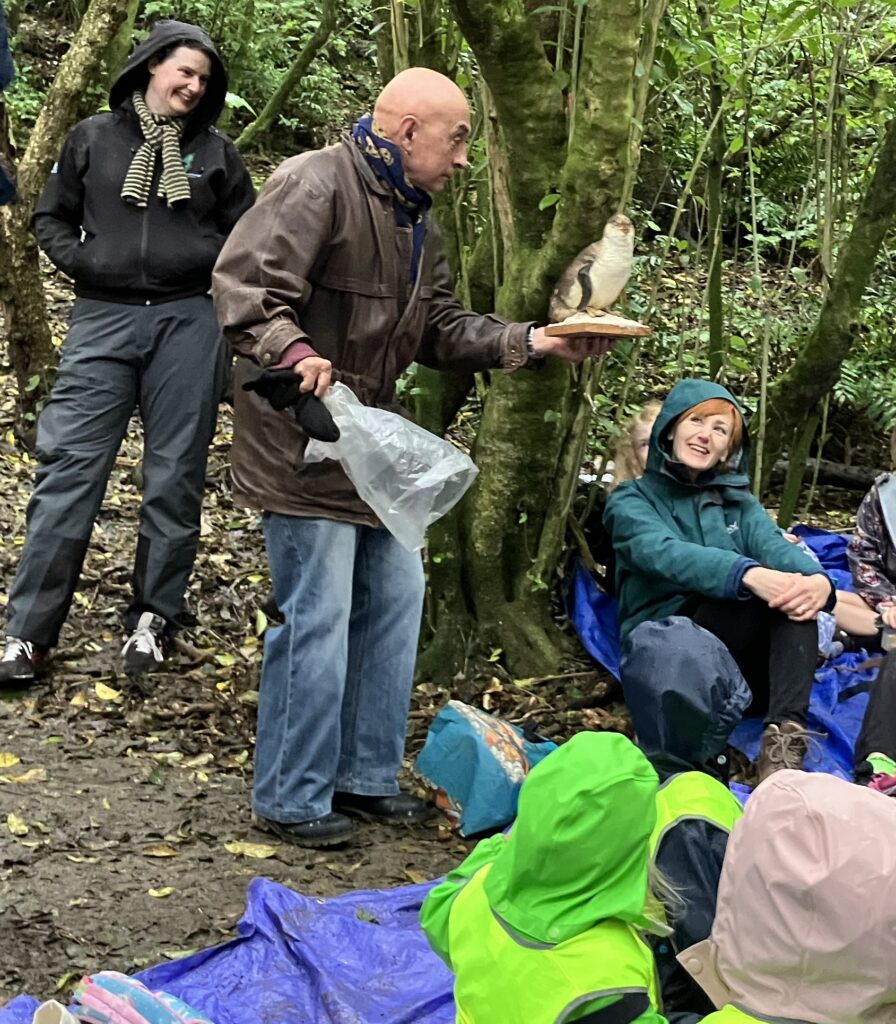
We were grateful for Ray Ahipene-Mercer (Ngāti Ira, Ngāi Tara) who set the kaupapa at Centennial Reserve and shared the significance of ngahere as kai and habitat for manu.
Events and sessions were tailored to support where each rōpū was at in terms of nature connection and learning. Local community groups and Mountains to Sea Wellington supported different events, so while each one was unique to that space, the key elements of connection with local whenua, noticing te taiao and the significance of awa as a habitat were always present.
“Her roots can go right into Papatūānuku” – participant
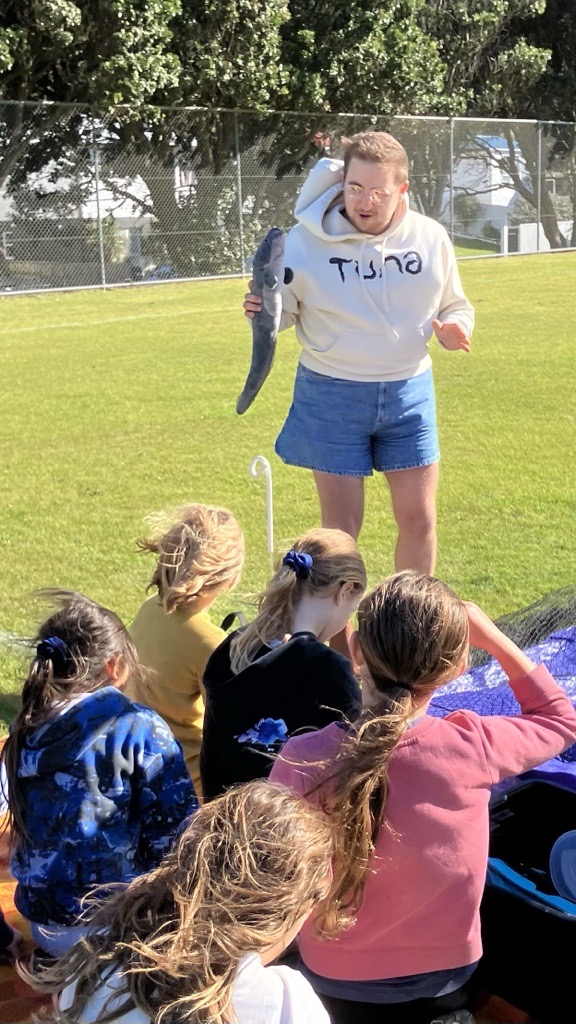
Ākonga at Ōwhiro Bay met tuna expert Jack from Victoria University, who helped them experience being a tuna, navigating their way from the moana to a culverted awa to complete their lifecycle.
Spread throughout the term, the first nature connect event was near the South Coast in Ōwhiro Bay, and the series finished across the harbour in Maupuia, Miramar. Activities to connect with te taiao included a Matariki whetū search, noticing tohu of the seasons and slowing down to look, listen and feel our surroundings. There were also opportunities to hīkoi, observing patterns and colours in nature and gently delve into the underworld of leaf litter, discovering the teeny critters that call this place home and how these magical spaces create the perfect environment for ngā kākano (seeds) to grow.
Some tamariki had the opportunity to get into their local awa, feeling the cool water on their hands as they searched under rocks and along the stream banks for life – and there was plenty! Tamariki and whānau were astounded by the variety of life in their local awa. They were often caught by surprise and delight seeing kōura of all sizes hiding under rocks, swimming backwards and even carrying eggs! Native ika such as banded kōkopu with golden stripes shimmering under torch light were also discovered.
“I felt happy and really inspired”
“Can we come here every day?” – comments from ākonga
With a focus on awa as habitats and connectors, another creature at the heart of these events was the mysterious tuna kūwharuwharu – the longfill eel. To help tamariki appreciate their strength and resolve, ākonga played an experiential tuna life cycle game where they ‘swam’ under a fishing net, through tunnels, across wetlands and out to te moana. A highlight of the events for Chloe and Chandra was sharing mātauranga from Te Ātiawa ki Whakarongotai to support weaving of ikawai taura (fish ladders) using tī kouka rau (leaves). These are easy for ākonga to contribute to, and provide support for migrating native ika as well as safe habitat for invertebrates and kōura. As a result, through understanding and taking action, many tamariki aspire to have these taonga return to their local awa.
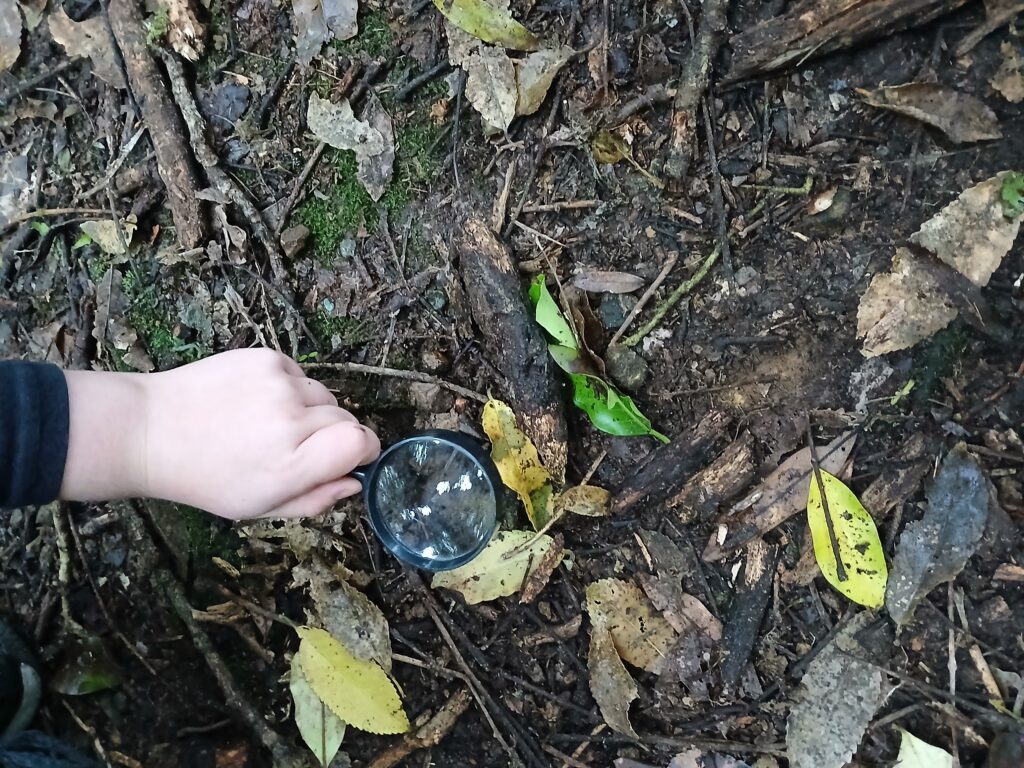
Getting up close with the creatures who call the local awa and ngahere home was a highlight for tamariki at Khandallah Park.
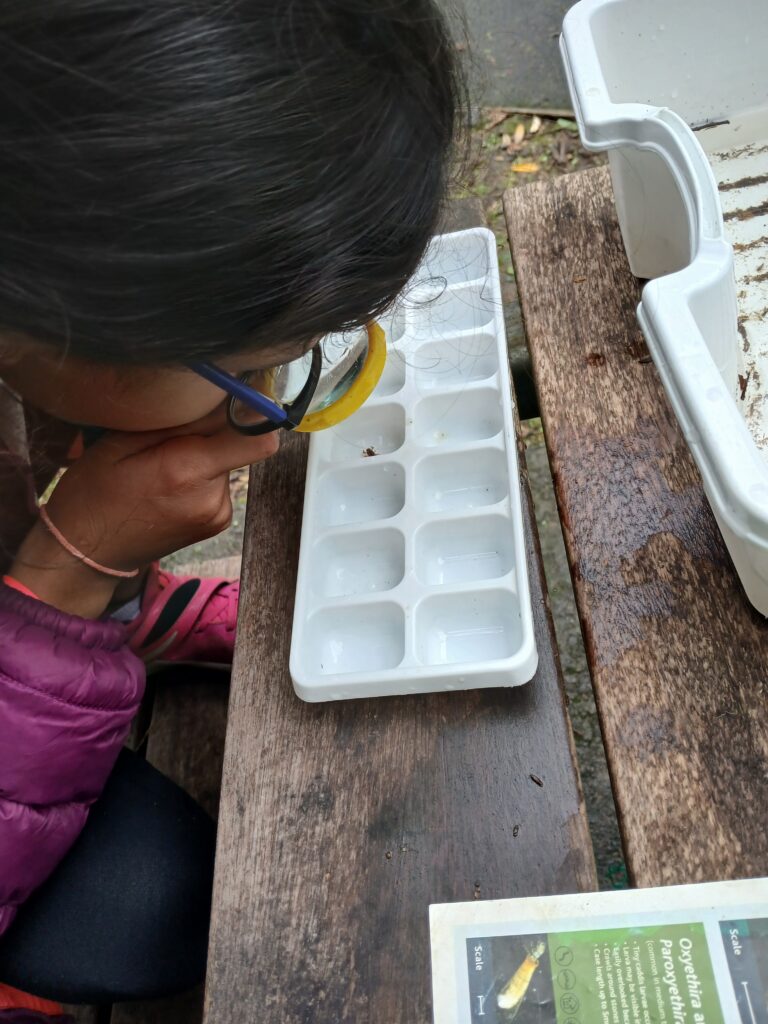
Khandallah Park investigations.
“Our fish are so cool!” – participant highlight
These events created much kōrero about sharing the magic of local spaces with whānau and friends and how to enhance and protect these often-overlooked areas. Some ākonga planted native rākau to help reestablish native forest areas, providing kai and homes for ngā manu, ngā wētā and ngā mū (insects). Seedlings were gently placed into the whenua under the watchful eye of careful waterers who made sure ngā rākau were well watered before tamariki headed back to kura and playcentre. Other rōpū are making plans for taking action and connecting with their special local places more regularly.
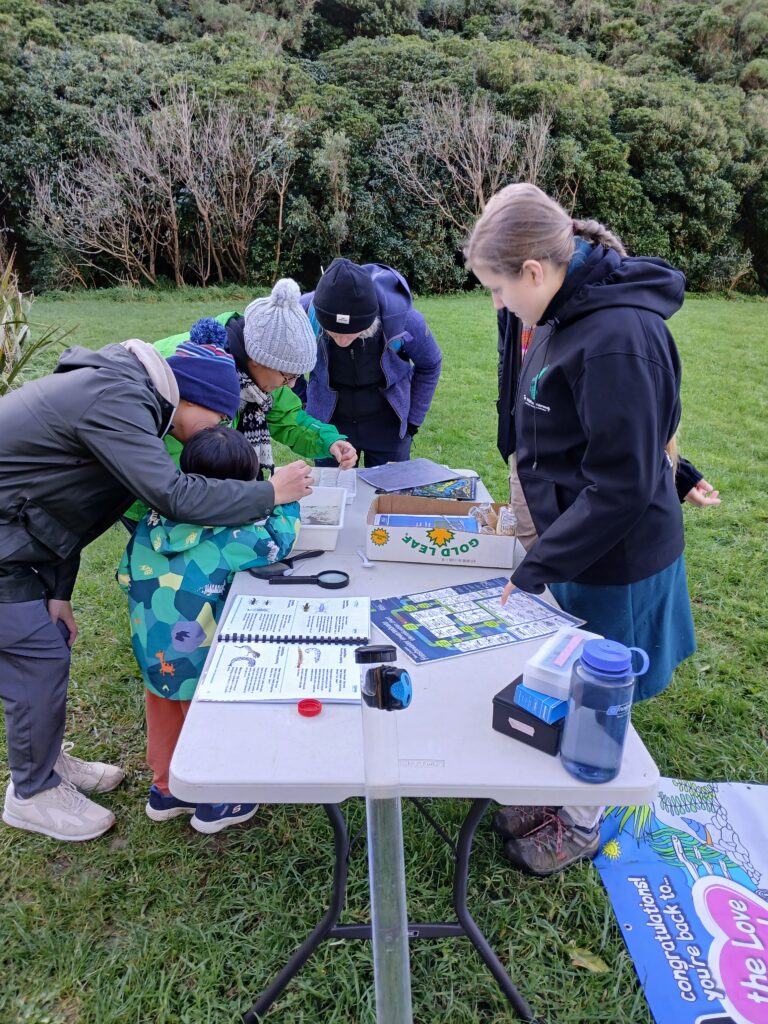
Supporting communities connecting with their local nature space was a collaborative effort between Enviroschools, Mountains to Sea and the local restoration group at Cashmere Reserve.
“I just didn’t know we had native fish. This is amazing to be able to know if the river is healthy by looking for these little bugs” – participant feedback
Banner Photo: Creating habitat for manu and insects through planting was a special part of the Kaupapa at Seton Nossiter Park.